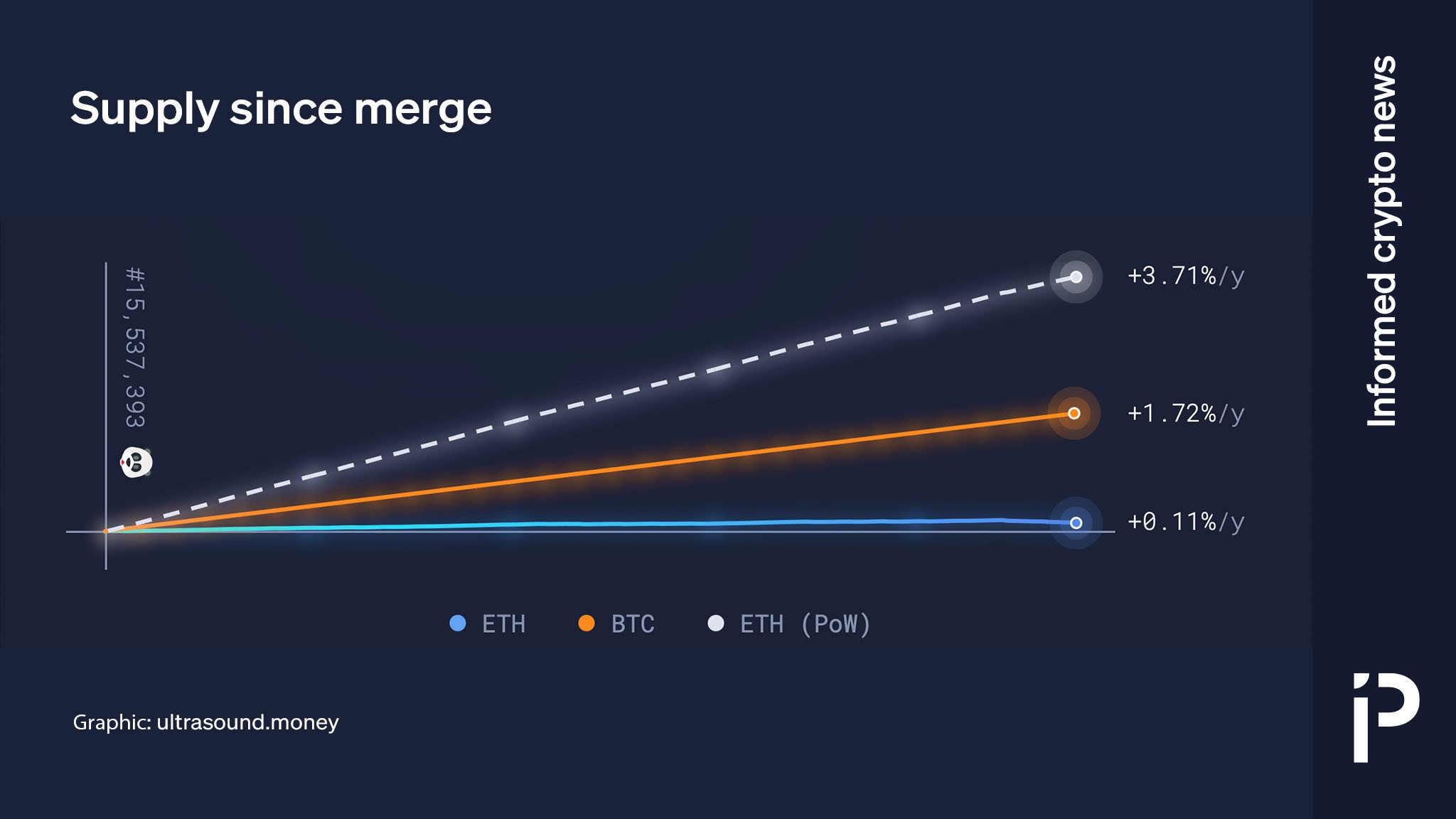Little-known crypto makes ETH deflationary — but for how long?

Ethereum network traffic has been up over the last two days, sustaining gas prices above the “ultra-sound” threshold for the first time since last month’s Merge.

However, the increased usage doesn’t look to be the return of a bull market, rather, it appears to be caused by just one token, XEN Crypto, which launched on Saturday.
According to the project’s whitepaper, XEN aims to solve the pump-and-dump problem facing most small-cap coin launches via a free mint system. Anyone can claim a share of tokens by simply paying the necessary gas fee.
Users rushed to mint the token, seeing an opportunity to make a quick profit while XEN’s (rapidly falling) price remains above that of the required gas. At the time of writing, XEN has almost 3,000 holders and accounts for over 60,000 transfers.
And given the low network usage in the depths of a punishing bear market, these users represent a considerable portion of traffic on the blockchain; the XEN token contract accounts for over 40% of gas in the past 24 hours according to on-chain data.
ETH supply has grown by less than 10k since the Merge
All transactions on Ethereum require users to pay gas fees (in ETH), a proportion of which is ‘burned,’ reducing the total supply.
This fraction, known as the base fee, varies according to network traffic. A recent report by crypto exchange Kraken, published just days before the Merge, calculated the threshold at which burned base fees offset ETH emissions in validator rewards:
“We find that a threshold base fee greater than 15.43 gwei is required for ETH to become deflationary post-Merge.”
Since the Merge, Ethereum’s transition to Proof-of-Stake consensus, the rate of supply increase of the network’s native token, ETH, has been dramatically reduced.

Read more: Low usage stops post-merge Ethereum from becoming deflationary
According to ultrasound.money, ETH supply has grown by less than 10k, rather than over 300k under Proof-of-Work, a net reduction of over 95%.
Despite this, low usage has meant that the supply reduction has fallen short of making ETH truly deflationary. The idea of ETH as “ultra sound money” has been one of the Merge’s most hotly-anticipated effects, which Ethereum advocates hoped would haul DeFi out of a bear market.
This weekend, though, marks the first prolonged period in which base fees have remained above the deflationary threshold since the Merge. And, as newly-minted XEN is dumped onto the market, and the price drops below minting costs, this spike in network traffic will likely die away.
David Hoffman of Bankless argues that the current fee model produces “natural interest rates,” potentially leading to increased market stability.
EIP1559 and the ultra-sound money model produces natural interest rates
high blockspace demand implies a ‘hot economy’
high tx fees = high ETH burn and a high PoS yieldETH yield goes up = more demand to take ETH from DeFi, and stake it, naturally cooling the DeFi economy
— DavidHoffman.eth ??? (@TrustlessState) September 12, 2022
But for now, ETH holders may have to keep waiting for their dreams of “ultra sound money” to become a reality.






 Bitcoin
Bitcoin  Ethereum
Ethereum  Tether
Tether  USDC
USDC  TRON
TRON  Dogecoin
Dogecoin  Cardano
Cardano  Bitcoin Cash
Bitcoin Cash  Chainlink
Chainlink  LEO Token
LEO Token  Stellar
Stellar  Litecoin
Litecoin  Hedera
Hedera  Monero
Monero  Dai
Dai  OKB
OKB  Cronos
Cronos  Ethereum Classic
Ethereum Classic  Gate
Gate  Cosmos Hub
Cosmos Hub  VeChain
VeChain  Algorand
Algorand  KuCoin
KuCoin  Stacks
Stacks  Tether Gold
Tether Gold  Theta Network
Theta Network  Zcash
Zcash  IOTA
IOTA  Tezos
Tezos  TrueUSD
TrueUSD  NEO
NEO  Polygon
Polygon  Decred
Decred  Dash
Dash  Ravencoin
Ravencoin  Zilliqa
Zilliqa  Qtum
Qtum  Synthetix Network
Synthetix Network  Basic Attention
Basic Attention  0x Protocol
0x Protocol  Siacoin
Siacoin  Holo
Holo  DigiByte
DigiByte  Enjin Coin
Enjin Coin  Nano
Nano  Ontology
Ontology  Status
Status  Hive
Hive  Waves
Waves  Lisk
Lisk  Pax Dollar
Pax Dollar  Steem
Steem  BUSD
BUSD  Numeraire
Numeraire  NEM
NEM  Huobi
Huobi  OMG Network
OMG Network  Bitcoin Gold
Bitcoin Gold  Ren
Ren  Augur
Augur